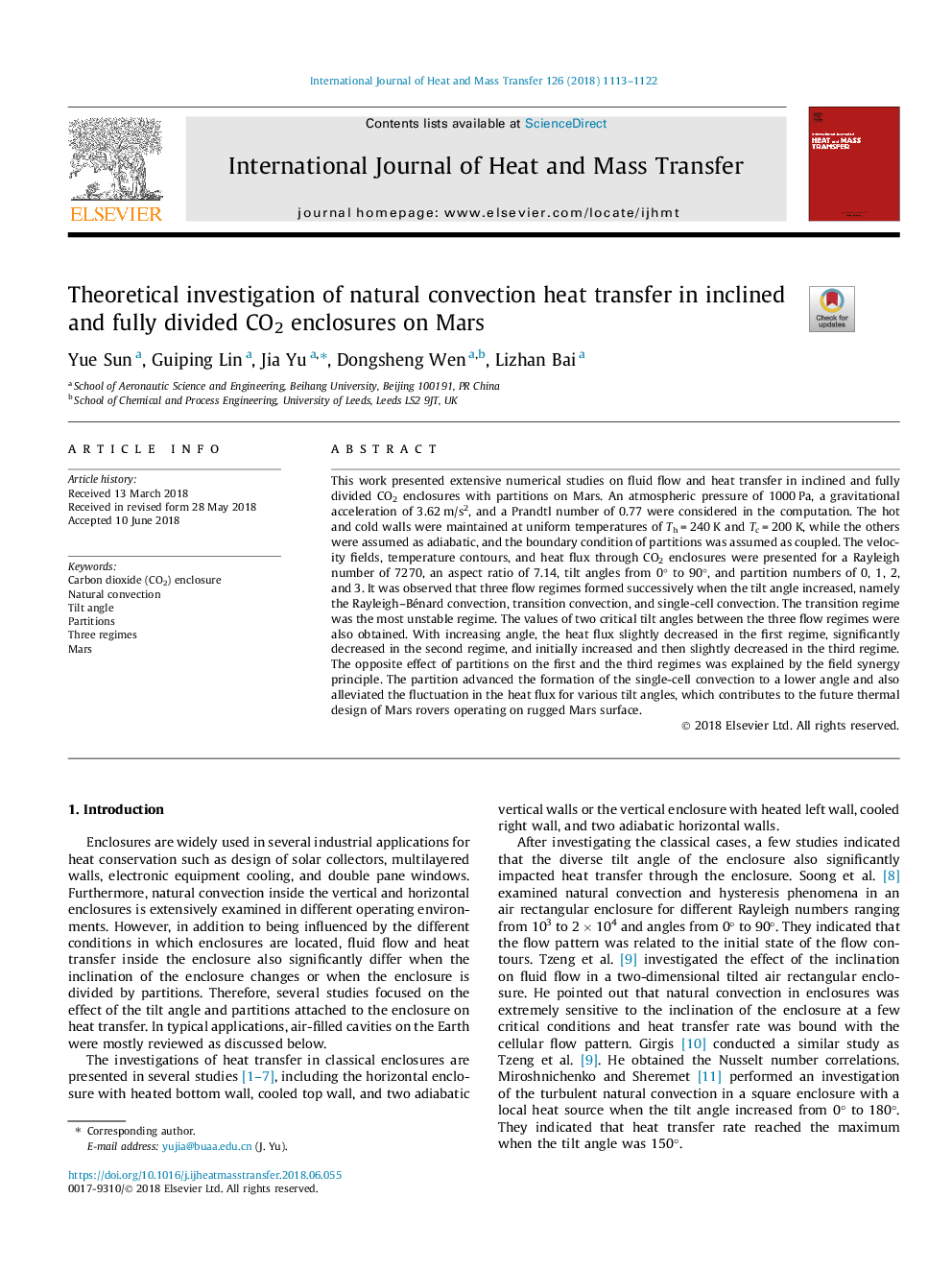| Article ID | Journal | Published Year | Pages | File Type |
|---|---|---|---|---|
| 7053937 | International Journal of Heat and Mass Transfer | 2018 | 10 Pages |
Abstract
This work presented extensive numerical studies on fluid flow and heat transfer in inclined and fully divided CO2 enclosures with partitions on Mars. An atmospheric pressure of 1000â¯Pa, a gravitational acceleration of 3.62â¯m/s2, and a Prandtl number of 0.77 were considered in the computation. The hot and cold walls were maintained at uniform temperatures of Thâ¯=â¯240â¯K and Tcâ¯=â¯200â¯K, while the others were assumed as adiabatic, and the boundary condition of partitions was assumed as coupled. The velocity fields, temperature contours, and heat flux through CO2 enclosures were presented for a Rayleigh number of 7270, an aspect ratio of 7.14, tilt angles from 0° to 90°, and partition numbers of 0, 1, 2, and 3. It was observed that three flow regimes formed successively when the tilt angle increased, namely the Rayleigh-Bénard convection, transition convection, and single-cell convection. The transition regime was the most unstable regime. The values of two critical tilt angles between the three flow regimes were also obtained. With increasing angle, the heat flux slightly decreased in the first regime, significantly decreased in the second regime, and initially increased and then slightly decreased in the third regime. The opposite effect of partitions on the first and the third regimes was explained by the field synergy principle. The partition advanced the formation of the single-cell convection to a lower angle and also alleviated the fluctuation in the heat flux for various tilt angles, which contributes to the future thermal design of Mars rovers operating on rugged Mars surface.
Related Topics
Physical Sciences and Engineering
Chemical Engineering
Fluid Flow and Transfer Processes
Authors
Yue Sun, Guiping Lin, Jia Yu, Dongsheng Wen, Lizhan Bai,
